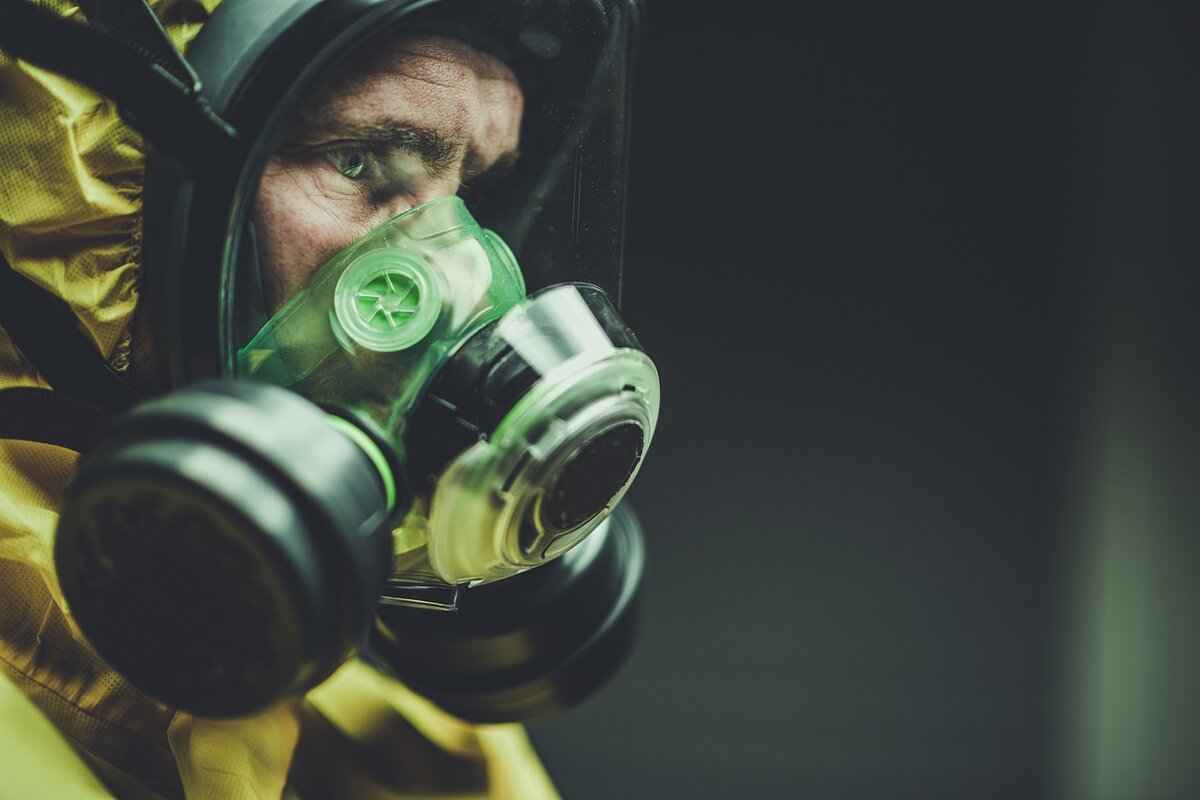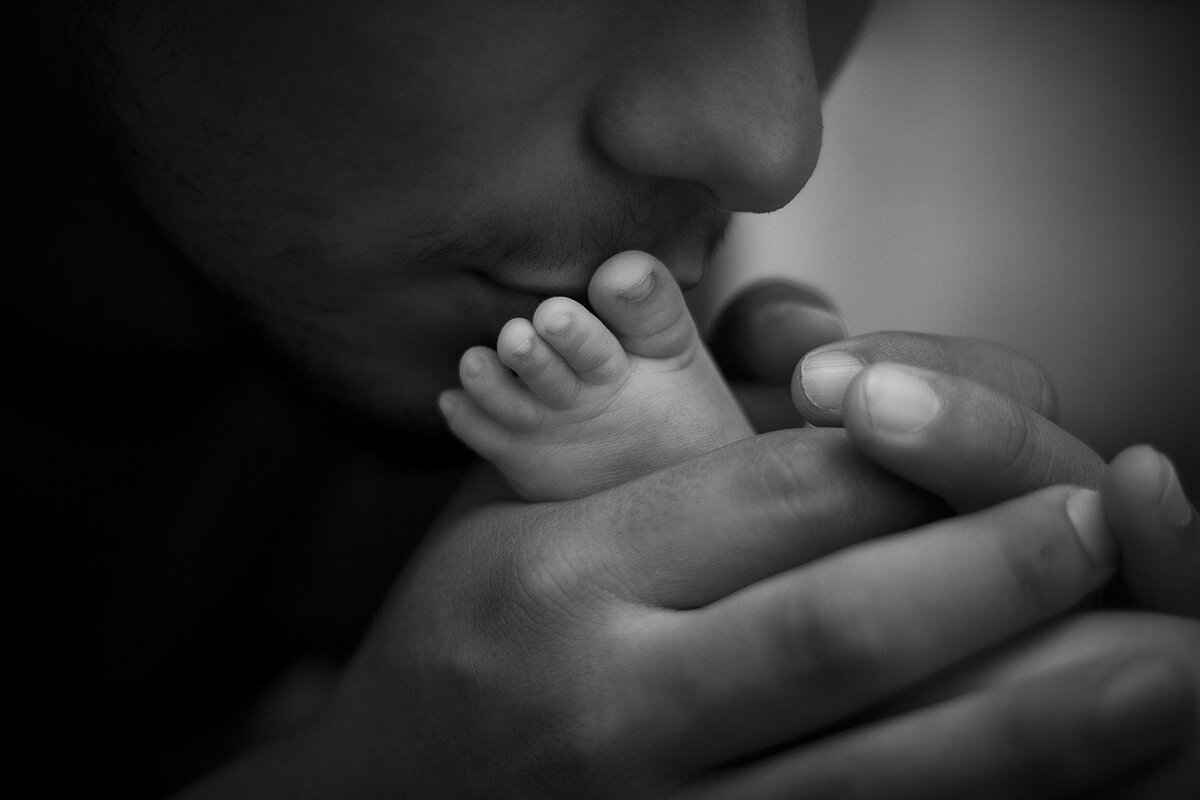This article explores effective strategies for safely detoxifying a child from mold exposure, providing practical insights and expert advice to ensure a healthy recovery.
Mold exposure can pose significant health risks, especially for children whose immune systems are still developing. Mold spores can be inhaled or come into contact with the skin, leading to various health complications. Children may experience respiratory issues, allergic reactions, and skin irritations as a result of mold exposure. It’s essential for parents to be aware of these risks and understand how mold can affect their child’s health.
Recognizing the symptoms of mold exposure is crucial for timely intervention. Common signs include:
- Respiratory Issues: Symptoms like coughing, wheezing, and difficulty breathing are prevalent among children exposed to mold.
- Allergic Reactions: Children may experience sneezing, runny noses, and itchy eyes due to mold exposure.
- Skin Irritations: Rashes, hives, and other skin-related symptoms are also indicators of mold exposure.
Taking prompt action after mold exposure is essential for a child’s health. Here are immediate steps parents should take:
- Remove the Child from the Environment: The first step is to ensure the child is taken away from the moldy environment to prevent further exposure.
- Consult a Healthcare Professional: Seeking medical advice is crucial. A healthcare professional can evaluate the child’s condition and recommend appropriate treatments.
Preventing future mold exposure is vital for a child’s health. Here are effective strategies:
- Proper Ventilation: Ensure adequate ventilation in the home to reduce moisture levels, which can inhibit mold growth.
- Regular Cleaning and Maintenance: Implement regular cleaning practices, focusing on areas prone to mold, such as bathrooms and basements.
Natural detoxification methods can support a child’s recovery from mold exposure:
- Hydration and Nutrition: Encourage proper hydration and a balanced diet rich in fruits and vegetables to aid detoxification.
- Herbal Remedies: Some herbal remedies, like milk thistle and dandelion, may support liver function and detoxification.
Ongoing monitoring of a child’s recovery is essential. Here are tips for tracking progress:
- Keeping a Health Journal: Document symptoms and improvements to track the child’s health over time.
- Regular Follow-Up Appointments: Schedule consistent check-ups with healthcare providers to monitor recovery.
Knowing when to seek professional help is vital. Key indicators include:
- Severe Symptoms: If the child experiences difficulty breathing or swelling, seek immediate medical care.
- Persistent Health Issues: Ongoing symptoms despite initial interventions warrant further medical evaluation.
Teaching children about mold and its dangers can empower them. Here are ways to educate:
- Understanding Mold Growth: Explain where and how mold grows in an age-appropriate manner.
- Encouraging Healthy Habits: Instill cleanliness and hygiene practices to help prevent future mold exposure.

Understanding Mold Exposure in Children
Mold exposure is a significant concern, particularly for children whose immune systems and respiratory systems are still developing. The presence of mold in homes and schools can lead to various health issues, making it essential for parents and caregivers to understand the implications of mold exposure.
- What is Mold? Mold is a type of fungus that thrives in damp and humid environments. It reproduces through spores that can easily become airborne and inhaled.
- How Does Mold Affect Children’s Health? Children are particularly vulnerable to mold exposure due to their smaller airways and developing immune systems. Exposure can lead to respiratory issues, allergic reactions, and other health complications.
- Why Are Children More Vulnerable? Children breathe more air relative to their body size compared to adults, making them more susceptible to inhaling mold spores. Additionally, their immune systems are still maturing, which can hinder their ability to combat allergens and toxins.
Health Risks Associated with Mold Exposure
Exposure to mold can lead to a range of health problems in children, including:
- Respiratory Issues: Symptoms such as coughing, wheezing, and shortness of breath are common. Children may experience exacerbated asthma symptoms if they have pre-existing conditions.
- Allergic Reactions: Mold can trigger allergic reactions, leading to symptoms like sneezing, runny nose, and itchy eyes. In some cases, this can escalate to more severe allergic reactions.
- Skin Irritations: Contact with mold can cause skin irritations, including rashes and hives. Parents should monitor their children for any unusual skin reactions.
- Long-Term Health Effects: Chronic exposure to mold can result in long-term respiratory issues, developmental delays, and other serious health conditions.
Symptoms to Watch For
Being vigilant about the signs of mold exposure is crucial for timely intervention. Parents should look out for the following symptoms:
- Persistent coughing or wheezing- Frequent respiratory infections- Skin rashes or irritations- Fatigue or lethargy- Unexplained headaches
If any of these symptoms occur, it is essential to consult a healthcare professional promptly. Early detection and intervention can significantly improve health outcomes for children exposed to mold.
Creating a Safe Environment
To mitigate the risks associated with mold exposure, it is vital to create a safe living environment. Regular cleaning, proper ventilation, and immediate action in case of water damage can help prevent mold growth. Ensuring that children understand the importance of hygiene and cleanliness can also empower them to contribute to a mold-free home.
In summary, understanding mold exposure and its effects on children’s health is crucial for parents and caregivers. By recognizing symptoms, taking preventive measures, and ensuring a safe living environment, we can protect our children from the potential health risks associated with mold.

Identifying Symptoms of Mold Exposure
Recognizing the symptoms of mold exposure is crucial for timely intervention, especially when it comes to children, who are often more vulnerable to environmental toxins. Understanding these symptoms can help parents and caregivers take the necessary steps to protect their child’s health. Below, we outline common signs that may indicate a child has been exposed to mold.
- Respiratory Issues: One of the most prevalent effects of mold exposure is respiratory problems. Symptoms may include:
- Coughing: A persistent cough that does not improve may indicate irritation in the airways.
- Wheezing: This high-pitched whistling sound during breathing can signal bronchial constriction.
- Shortness of Breath: Difficulty in breathing or feeling out of breath during normal activities can be alarming.
- Allergic Reactions: Children may also exhibit allergic symptoms due to mold exposure, such as:
- Sneezing: Frequent sneezing episodes can indicate an allergic response.
- Runny or Stuffy Nose: Nasal congestion or discharge is common in children exposed to allergens.
- Itchy Eyes: Red, watery, or itchy eyes are frequent signs of mold-related allergies.
- Skin Irritations: Mold exposure can lead to various skin issues, including:
- Rashes: Red, itchy patches may develop on the skin.
- Hives: Raised, itchy welts can appear as a reaction to mold.
- Dry Skin: Prolonged exposure may cause skin to become dry and irritated.
- Fatigue and Headaches: Mold exposure can also lead to general malaise. Symptoms include:
- Fatigue: A child may seem unusually tired or lethargic.
- Headaches: Frequent headaches can be a sign of mold-related illness.
It is important for parents to be vigilant and monitor their children for these symptoms, especially if they have been in a moldy environment. If any of these symptoms persist, it is advisable to consult a healthcare professional for further evaluation and appropriate interventions. Early recognition and action can significantly improve a child’s recovery and overall health.
Respiratory Issues
Respiratory problems are among the most prevalent health concerns associated with mold exposure, particularly in children. When children inhale mold spores, they can experience a range of symptoms that may vary in intensity depending on their sensitivity and the level of exposure. Understanding these symptoms is crucial for parents and caregivers to ensure timely intervention and care.
- Coughing: A common initial response to mold exposure is coughing. This can range from a mild, dry cough to a more persistent, productive cough that may indicate irritation in the airways.
- Wheezing: Children may also exhibit wheezing, which is a high-pitched whistling sound during breathing. Wheezing often signals narrowed airways and can be particularly alarming for parents.
- Difficulty Breathing: In more severe cases, children may experience shortness of breath or difficulty breathing. This symptom is especially concerning and should prompt immediate medical evaluation.
Mold exposure can exacerbate pre-existing respiratory conditions such as asthma or allergies. Children with asthma are particularly vulnerable, as mold can trigger asthma attacks and worsen symptoms. Parents should be vigilant in monitoring their child’s respiratory health, especially if they have a history of respiratory issues.
In addition to these immediate symptoms, mold exposure can lead to long-term respiratory problems if not addressed. Chronic exposure may contribute to the development of conditions such as allergic rhinitis or even more serious issues like bronchitis or pneumonia. Therefore, it is essential to recognize the signs early and consult healthcare professionals for appropriate interventions.
Parents should also consider environmental factors that might be contributing to their child’s respiratory issues. Poor indoor air quality, high humidity levels, and inadequate ventilation can all exacerbate the effects of mold. Implementing measures to improve air quality, such as using air purifiers and maintaining proper humidity levels, can help mitigate these risks.
In conclusion, understanding the respiratory issues related to mold exposure is vital for safeguarding children’s health. By being aware of the symptoms and taking proactive steps, parents can significantly reduce the risks associated with mold and promote a healthier living environment for their children. Regular check-ups with healthcare providers can also ensure that any respiratory issues are managed effectively, providing peace of mind for families.
Allergic Reactions
Children are particularly vulnerable to the effects of mold exposure, which can trigger a range of allergic reactions. Understanding these reactions is crucial for parents and caregivers to ensure timely intervention and appropriate care. Mold spores, which can be found in damp areas of the home, can lead to various symptoms that may disrupt a child’s daily life.
Common Symptoms of Mold Allergies
- Sneezing: Frequent sneezing is one of the most common reactions children may exhibit when exposed to mold. This reflex action helps to expel irritants from the nasal passages.
- Runny Nose: A runny or congested nose is another typical symptom. Children may complain of a stuffy feeling, making it difficult for them to breathe comfortably.
- Itchy Eyes: Allergic reactions to mold can cause the eyes to become red, itchy, and watery. This discomfort can lead to further irritation as children rub their eyes.
- Coughing: Persistent coughing can occur as the body attempts to clear the airways of mold spores, which can be particularly distressing for younger children.
- Skin Reactions: In some cases, mold exposure can also lead to skin irritations such as rashes or hives, which can be itchy and uncomfortable.
Identifying Allergic Reactions
Recognizing the signs of mold allergies is key to addressing the issue effectively. Parents should be observant, especially during periods of increased mold growth, such as after heavy rain or in humid conditions. If a child exhibits any of the symptoms listed above, it may be time to investigate the home environment for potential mold issues.
Seeking Medical Advice
If a child shows persistent symptoms of mold allergies, consulting a healthcare professional is essential. An allergist can provide testing to determine specific allergies and recommend appropriate treatments, which may include antihistamines or other medications to alleviate symptoms.
Preventing Mold Allergies
To protect children from mold allergies, maintaining a clean and dry living environment is crucial. Regular cleaning, proper ventilation, and humidity control can significantly reduce the likelihood of mold growth. Parents should also educate their children about the importance of hygiene and avoiding damp areas.
In summary, understanding and recognizing allergic reactions to mold exposure is vital for safeguarding children’s health. By being proactive and informed, parents can take the necessary steps to minimize exposure and seek appropriate care when needed.
Skin Irritations
Skin irritations are a common yet concerning symptom that can arise from mold exposure, particularly in children. Parents should be vigilant in monitoring their child’s skin for any signs of irritation, as these can manifest in various forms. The most prevalent types of skin reactions include rashes, hives, and eczema-like symptoms. Understanding these conditions is crucial for early intervention and effective treatment.
- Rashes: Mold exposure can trigger allergic reactions, leading to rashes that may appear red, itchy, and inflamed. These rashes can occur anywhere on the body and may vary in size and severity. Parents should take note of any new rashes that develop, especially if they coincide with known mold exposure.
- Hives: Another common reaction is the appearance of hives, or urticaria, which are raised, itchy welts on the skin. Hives can be triggered by allergens, including mold spores. They may come and go and can be quite uncomfortable for children, prompting scratching that can lead to further irritation.
- Eczema: Children with a history of eczema may find their symptoms exacerbated by mold exposure. Eczema can cause dry, flaky skin that is prone to itching and inflammation. It’s essential for parents to recognize the potential link between mold and worsening eczema symptoms.
Monitoring these symptoms is vital. If a child develops any of these skin irritations after mold exposure, parents should consider consulting a healthcare professional for proper evaluation and treatment.
Preventive Measures
To minimize the risk of skin irritations from mold, parents can take several preventive measures. Maintaining a clean and dry home environment is crucial, as mold thrives in damp conditions. Regularly inspecting areas prone to moisture, such as bathrooms and basements, can help catch mold growth early.
Additionally, using air purifiers with HEPA filters can reduce airborne mold spores, further protecting children from exposure. Educating children about the importance of hygiene, such as regular handwashing and bathing, can also help prevent skin irritations.
In summary, skin irritations resulting from mold exposure are serious concerns that parents should actively monitor. By recognizing the symptoms and taking preventive measures, parents can help safeguard their children’s health and well-being. If symptoms persist or worsen, seeking professional medical advice is essential for effective management and treatment.
Long-Term Health Risks
Long-term exposure to mold can have significant and detrimental effects on health, particularly in vulnerable populations such as children. Understanding the potential chronic conditions and developmental concerns linked to mold exposure is crucial for parents and caregivers. Mold spores can trigger a variety of health issues, which may not be immediately apparent but can manifest over time, leading to serious long-term consequences.
One of the most concerning aspects of mold exposure is its potential to cause respiratory diseases. Children who are exposed to mold may develop chronic respiratory conditions such as asthma or bronchitis. Research indicates that prolonged exposure can lead to a heightened sensitivity to allergens, making children more susceptible to respiratory infections and other complications. Symptoms may include persistent coughing, wheezing, and shortness of breath, which can significantly impact a child’s quality of life.
In addition to respiratory issues, mold exposure has been linked to developmental delays in children. Studies suggest that children exposed to mold during critical periods of development may experience cognitive impairments. This can manifest as difficulties in learning, attention deficits, and behavioral issues. Parents should be vigilant for signs of these developmental concerns, as early intervention can mitigate some of the adverse effects.
Another significant concern is the potential for chronic fatigue syndrome and other systemic conditions. Children exposed to mold may report feelings of extreme tiredness that are not alleviated by rest. This can interfere with daily activities, including school performance and social interactions. Additionally, mold exposure can lead to autoimmune disorders, where the body’s immune system mistakenly attacks its own tissues. Such conditions can be challenging to diagnose and manage, often requiring long-term medical intervention.
Furthermore, mold exposure can exacerbate existing health issues, such as allergies and asthma. Children with a history of allergies may find their symptoms worsening in mold-infested environments, leading to increased use of medications and healthcare visits. It is essential for parents to monitor their children’s health closely and seek medical advice if they notice any changes or worsening of symptoms.
In summary, the long-term health risks associated with mold exposure in children are multifaceted and serious. From respiratory diseases and developmental delays to chronic fatigue and autoimmune disorders, the implications of mold exposure can have lasting effects on a child’s well-being. Awareness and proactive measures are critical in preventing exposure and addressing health concerns promptly.

Steps to Take Immediately After Exposure
When a child is exposed to mold, it is crucial for parents to act swiftly to minimize potential health risks. Mold can have various effects on children, and understanding the immediate actions to take can significantly impact their recovery. Here are essential steps to consider:
- Remove the Child from the Environment: The very first step is to ensure the child is taken away from the moldy area. This action prevents further exposure and allows the child to breathe clean air. Move them to a safe, well-ventilated space until the area can be thoroughly cleaned and assessed.
- Assess the Situation: After removing the child, evaluate the extent of mold contamination. Look for visible mold growth, dampness, or water damage. Document the situation with photographs if necessary, as this information can be useful for professionals who may need to address the issue later.
- Consult a Healthcare Professional: It is vital to seek medical advice following mold exposure. Schedule an appointment with a pediatrician who can assess the child’s health and recommend necessary tests or treatments. Be prepared to discuss any symptoms the child may exhibit, such as coughing, sneezing, or skin irritations.
- Monitor Symptoms: Keep a close eye on your child for any symptoms that may develop after exposure. Common signs include respiratory issues, allergic reactions, or skin irritations. If symptoms worsen or new ones appear, it is important to revisit the healthcare provider for further evaluation.
- Document Everything: Maintain a health journal to track your child’s symptoms, any changes in behavior, and their overall health status. This documentation can be invaluable for healthcare providers when determining the best course of action.
- Ensure Hydration: Encourage your child to drink plenty of fluids. Staying hydrated is essential for helping the body detoxify and recover from any potential mold-related effects.
- Clean the Affected Area: Once the child is safe, it’s time to address the mold problem. Wear protective gear such as gloves and masks while cleaning. Use appropriate cleaning solutions specifically designed to eliminate mold. If the mold is extensive, consider hiring a professional mold remediation service.
- Inform Others: If your child attends school or daycare, inform the staff about the exposure. This step ensures that they can monitor other children and take preventive measures in the facility.
- Follow Up with Professionals: After initial assessments and treatments, continue to follow up with healthcare professionals. Regular check-ups can help ensure that your child is recovering well and that any lingering effects of mold exposure are addressed promptly.
By taking these immediate steps, parents can significantly reduce the risks associated with mold exposure and support their child’s recovery. Remember, acting quickly and seeking professional guidance are key components in ensuring your child’s health and well-being.
Remove the Child from the Environment
The first and most critical step in addressing mold exposure in children is to remove them from the moldy environment. This action is essential for ensuring their safety and facilitating a successful recovery. Mold can produce allergens, irritants, and mycotoxins that may lead to serious health issues, particularly in vulnerable populations such as children. By relocating the child to a clean, dry, and well-ventilated space, parents can significantly reduce their exposure to harmful mold spores.
Children are particularly susceptible to the adverse effects of mold due to their developing respiratory systems and immune responses. Symptoms can range from mild to severe, including respiratory issues, skin irritations, and allergic reactions. Therefore, it is imperative to act swiftly. Here are some important considerations:
- Assess the Environment: Before removing the child, evaluate the extent of mold growth. Identify areas where mold is prevalent and understand the potential health risks associated with those areas.
- Ensure Immediate Safety: When removing the child, ensure that they are not exposed to mold spores during the transition. This may involve using protective gear, such as masks and gloves, for adults handling the removal process.
- Provide a Safe Space: Relocate the child to a safe area that is free from mold. This could be a different room in the house or a completely different location, such as a friend or relative’s home, until the mold issue is resolved.
- Monitor Symptoms: After relocation, carefully monitor the child’s health for any changes in symptoms. If symptoms persist or worsen, it is crucial to consult a healthcare professional.
In addition to removing the child from the immediate danger, it is also vital to address the underlying mold problem in the home. This involves thorough cleaning and remediation of affected areas to prevent future exposure. Parents should consider hiring professionals who specialize in mold removal to ensure that the environment is safe for their child.
Furthermore, creating a mold-free home environment is essential for long-term health. This includes maintaining proper ventilation, controlling humidity levels, and conducting regular inspections for signs of mold growth. By taking these proactive steps, parents can provide a safe and healthy living space that promotes recovery and well-being for their children.
Consult a Healthcare Professional
Following mold exposure, it is critical for parents to to ensure the well-being of their child. Mold can have a profound impact on health, especially for vulnerable populations like children. This section emphasizes the importance of seeking professional evaluation and potential treatments, which can significantly influence recovery outcomes.
First and foremost, a healthcare professional can conduct a thorough evaluation to assess the extent of mold exposure. This evaluation often includes a detailed medical history and a physical examination. Symptoms may vary widely, from respiratory issues to skin irritations, and a professional can help discern whether these symptoms are directly linked to mold exposure or if other underlying conditions may be at play.
In many cases, healthcare providers may recommend specific diagnostic tests to identify the effects of mold exposure. These tests can include:
- Allergy Testing: To determine if the child has developed allergies to mold.
- Chest X-rays: To examine lung health and identify potential respiratory complications.
- Skin Tests: To check for skin reactions that indicate mold sensitivity.
Once a proper diagnosis is made, healthcare professionals can suggest appropriate treatments. This may involve:
- Medications: Antihistamines, corticosteroids, or bronchodilators may be prescribed to alleviate symptoms.
- Therapeutic Interventions: Breathing exercises or physical therapy may be recommended to improve lung function.
- Follow-Up Care: Regular check-ups to monitor recovery and adjust treatment plans as necessary.
Moreover, healthcare professionals can provide guidance on preventative measures to avoid future mold exposure. This includes advice on maintaining a healthy living environment, such as ensuring proper ventilation and humidity control. Understanding how to mitigate mold growth in the home can empower parents to take proactive steps in safeguarding their child’s health.
In summary, seeking medical advice after mold exposure is not just a recommendation; it is a crucial step in ensuring a child’s recovery and long-term health. By consulting healthcare professionals, parents can obtain tailored treatment plans and essential resources that support their child’s healing journey.

Creating a Mold-Free Home Environment
is essential for ensuring the health and well-being of your child. Mold can thrive in damp and poorly ventilated areas, posing serious health risks, especially for young ones. This section will discuss effective strategies for maintaining a mold-free living space, helping you protect your child from potential exposure.
To start, it is vital to understand that mold spores are present in the air we breathe, but they can proliferate in specific conditions. Therefore, controlling the environment in your home is key to preventing mold growth. Below are some strategies to achieve this:
- Regular Inspection: Conduct routine checks in areas prone to moisture, such as bathrooms, kitchens, and basements. Look for signs of mold growth, such as discoloration or musty odors.
- Humidity Control: Keep indoor humidity levels below 50%. Use dehumidifiers in damp areas and ensure proper ventilation in rooms that generate moisture, like the kitchen and bathroom.
- Proper Ventilation: Ensure that your home is well-ventilated. Open windows when weather permits and use exhaust fans in areas like the bathroom and kitchen to expel moisture-laden air.
- Water Damage Prevention: Address leaks and water damage promptly. Repair any plumbing issues and ensure that roofs and gutters are in good condition to prevent water intrusion.
- Use Mold-Resistant Products: When renovating or building, consider using mold-resistant materials, such as drywall and paints that inhibit mold growth.
In addition to these preventive measures, regular cleaning is crucial. Here are some cleaning practices to keep your home mold-free:
- Frequent Cleaning: Clean and dry areas where mold is likely to grow, such as bathrooms and kitchens, at least once a week.
- Use Natural Cleaners: Consider using vinegar or baking soda as natural cleaning agents, which can effectively eliminate mold spores without introducing harmful chemicals into your home.
- Dry Wet Items Promptly: If any items get wet, such as towels or clothes, dry them immediately to prevent mold growth.
Finally, educating your family about mold prevention is crucial. Teach your children the importance of keeping their living space clean and dry. Encourage them to report any signs of moisture or mold to an adult immediately. By fostering awareness and implementing these strategies, you can create a safer, healthier environment for your child.
Proper Ventilation
Ensuring adequate ventilation in the home is crucial for maintaining a healthy living environment, particularly in reducing the risk of mold growth. Mold thrives in damp, poorly ventilated areas, making it essential to implement effective airflow and humidity control strategies. Below are several practical tips to enhance ventilation in your home.
- Open Windows: Whenever weather permits, open windows to allow fresh air to circulate throughout your home. This simple act can significantly reduce indoor humidity levels, making it less conducive for mold to grow.
- Use Exhaust Fans: Install exhaust fans in high-moisture areas such as kitchens and bathrooms. These fans help remove excess moisture generated from cooking, showering, and washing, thereby improving overall air quality.
- Maintain HVAC Systems: Regularly service your heating, ventilation, and air conditioning (HVAC) systems to ensure they are functioning efficiently. Clean or replace filters as needed to promote better airflow.
- Install Air Purifiers: Consider using air purifiers equipped with HEPA filters to trap mold spores and other allergens. This can help improve indoor air quality, especially in areas prone to dampness.
- Seal Air Leaks: Inspect your home for air leaks around windows, doors, and ducts. Sealing these leaks can prevent moist air from entering and help maintain a stable indoor environment.
- Use Dehumidifiers: In particularly humid climates, a dehumidifier can be an effective tool in controlling indoor moisture levels. Aim to keep humidity levels below 50% to deter mold growth.
- Utilize Ceiling Fans: Ceiling fans can help circulate air within a room, promoting a more even distribution of temperature and moisture. This can be particularly beneficial in preventing stagnant air that can lead to mold.
In addition to these tips, it’s important to regularly monitor the humidity levels in your home using a hygrometer. This device can help you keep track of moisture levels and take action when they rise above recommended levels.
Creating a well-ventilated environment not only helps in mold prevention but also contributes to overall health and comfort. By implementing these strategies, you can significantly reduce the risk of mold growth and ensure a safer living space for you and your family.
Regular Cleaning and Maintenance
are essential practices in preventing mold buildup in homes, especially in areas prone to moisture. Mold thrives in damp environments, making it crucial to implement effective cleaning routines and utilize appropriate materials for mold prevention. By maintaining a clean living space, you can significantly reduce the likelihood of mold growth and protect your family’s health.
To begin with, it’s important to establish a consistent cleaning schedule. This should include:
- Weekly Cleaning: Regularly dust surfaces, vacuum carpets, and mop floors to eliminate dust and moisture that can contribute to mold growth.
- Bathroom Maintenance: Clean bathrooms weekly, focusing on areas like showers, sinks, and toilets where moisture accumulates. Use mold-resistant cleaners to inhibit mold growth.
- Kitchen Hygiene: Wipe down kitchen surfaces and appliances regularly, especially after cooking. Pay attention to spills and leaks, as they can create a breeding ground for mold.
In addition to routine cleaning, consider the following materials and tools that can enhance your mold prevention efforts:
- Vinegar: A natural disinfectant, vinegar can effectively kill mold spores. Use it to clean surfaces in damp areas.
- Baking Soda: This versatile product not only helps in cleaning but also absorbs moisture, making it a great ally against mold.
- Hydrogen Peroxide: A powerful cleaning agent, hydrogen peroxide can be used to treat mold on various surfaces. Ensure proper ventilation when using it.
Furthermore, ensure proper ventilation in your home. Open windows and doors when weather permits to allow fresh air to circulate. Install exhaust fans in bathrooms and kitchens to remove excess moisture. Dehumidifiers can also be beneficial in reducing humidity levels, particularly in basements and other damp areas.
Another critical aspect of mold prevention is to address leaks and water damage immediately. If you notice any signs of water intrusion, such as damp spots on walls or ceilings, take action to repair the source of the leak. This will not only prevent mold growth but also protect the structural integrity of your home.
Finally, educate your family about the importance of maintaining cleanliness and recognizing signs of mold. Encourage everyone to report any unusual odors or visible mold growth so that it can be addressed promptly. By fostering a culture of cleanliness and vigilance, you can create a healthier living environment for your family.
In summary, regular cleaning and maintenance are vital in preventing mold buildup. By implementing a consistent cleaning routine, utilizing effective cleaning materials, ensuring proper ventilation, and addressing water issues promptly, you can significantly reduce the risk of mold growth in your home. Protecting your family from mold exposure starts with these proactive measures.

Natural Detoxification Methods
can play a crucial role in supporting a child’s recovery from mold exposure. These methods are designed to enhance the body’s ability to eliminate toxins, thereby promoting overall health and well-being. In this section, we will explore various safe and effective detox strategies that can be easily incorporated into a child’s routine.
Detoxification is the process through which the body removes harmful substances. For children exposed to mold, this process can be especially important as their developing systems are more susceptible to toxins. Natural detox methods not only help in clearing out these toxins but also strengthen the immune system, aiding in a quicker recovery.
One of the simplest yet most effective detox strategies is ensuring proper hydration. Water is essential for flushing out toxins and maintaining optimal bodily functions. Encourage your child to drink plenty of fluids, especially filtered water, herbal teas, and fresh juices. Aim for at least 6-8 cups of fluids daily, depending on their age and activity level.
Incorporating a diet rich in fruits and vegetables can significantly aid in detoxification. Foods high in antioxidants, such as berries, leafy greens, and citrus fruits, help combat oxidative stress caused by mold exposure. Additionally, consider including fiber-rich foods like whole grains and legumes that support digestive health and promote regular bowel movements, which are vital for toxin elimination.
Some herbal remedies can also be beneficial in detoxifying the body. Herbs like milk thistle, dandelion root, and ginger have been traditionally used to support liver function and enhance detoxification processes. Always consult with a healthcare professional before introducing any herbal supplements to ensure they are safe and appropriate for your child’s age and health status.
Rest is an often-overlooked component of detoxification. During sleep, the body undergoes repair and regeneration, making it essential for recovery from mold exposure. Ensure your child has a consistent sleep schedule, aiming for 9-12 hours of sleep per night, depending on their age. Create a calming bedtime routine to promote better sleep quality.
Regular physical activity is another effective way to support detoxification. Exercise enhances circulation, promotes sweating, and helps the body eliminate toxins through the skin. Encourage your child to engage in activities they enjoy, such as playing outside, riding a bike, or participating in sports. Aim for at least 30 minutes of moderate exercise most days of the week.
A calm and stress-free environment can significantly impact a child’s recovery. Stress can hinder the body’s natural detox processes, so it’s essential to create a supportive atmosphere. Engage your child in relaxing activities such as yoga, meditation, or deep-breathing exercises. These practices can help reduce stress and promote overall well-being.
As you implement these natural detoxification methods, it is crucial to monitor your child’s progress. Keep track of any changes in symptoms and overall health. If you notice persistent issues or if your child’s condition worsens, consult a healthcare professional for further guidance and support.
In summary, natural detoxification methods can significantly aid in a child’s recovery from mold exposure. By focusing on hydration, nutrition, rest, physical activity, and creating a supportive environment, parents can help their children detoxify safely and effectively.
Hydration and Nutrition
Proper hydration and nutrition are essential components in the detoxification process, especially for children recovering from mold exposure. When a child is exposed to mold, their body may struggle to eliminate toxins effectively. By focusing on hydration and a nutrient-rich diet, parents can support their child’s natural detox mechanisms and promote overall health.
Importance of Hydration
Fluids play a vital role in flushing out toxins from the body. Water, herbal teas, and natural fruit juices are excellent choices for keeping children hydrated. It is recommended that children consume at least 6-8 glasses of water daily, depending on their age and activity level. Adequate hydration helps maintain kidney function, which is crucial for filtering out impurities. Additionally, fluids can help alleviate symptoms such as headaches, fatigue, and irritability, which may arise from mold exposure.
- Encourage regular water intake: Make it a habit for children to drink water throughout the day.
- Limit sugary drinks: Reduce consumption of sodas and sugary juices, which can lead to dehydration.
- Incorporate hydrating foods: Foods like cucumbers, watermelon, and oranges have high water content and can contribute to hydration.
Nutritional Recommendations
A well-balanced diet rich in vitamins and minerals is crucial for supporting the immune system and enhancing detoxification. Foods that are high in antioxidants, such as fruits and vegetables, can help neutralize free radicals produced during detoxification. Some beneficial foods include:
| Food | Benefits |
|---|---|
| Leafy Greens | Rich in chlorophyll, which aids in detoxification. |
| Berries | High in antioxidants that combat oxidative stress. |
| Citrus Fruits | Boost vitamin C levels, supporting immune function. |
| Nuts and Seeds | Provide healthy fats and essential nutrients for recovery. |
It is also important to include probiotic-rich foods like yogurt and fermented vegetables, which can help restore gut health that may have been compromised. A healthy gut plays a significant role in detoxification and overall well-being.
Meal Planning Tips
Parents can create meal plans that incorporate a variety of food groups to ensure children receive all necessary nutrients. Here are some practical tips:
- Plan balanced meals: Include a source of protein, healthy fats, and plenty of vegetables in every meal.
- Make it fun: Involve children in meal preparation to encourage them to try new healthy foods.
- Stay consistent: Establish regular meal and snack times to promote healthy eating habits.
In conclusion, prioritizing hydration and nutrition is critical in supporting a child’s recovery from mold exposure. By ensuring adequate fluid intake and a nutrient-dense diet, parents can help their children detoxify safely and effectively.
Herbal Remedies
Herbal Remedies for Detoxification in ChildrenWhen it comes to supporting children in their recovery from mold exposure, can play a significant role in detoxification. These natural options can be gentle yet effective, providing a holistic approach to healing. However, it is essential to choose safe and appropriate remedies tailored to a child’s needs. Below, we explore several herbal options that may aid in detoxification, their potential benefits, and considerations for use.
There are numerous herbal remedies that may assist in detoxifying the body, particularly after mold exposure. Here are some safe options:
- Dandelion Root: Known for its liver-supporting properties, dandelion root can help enhance detoxification processes. It may also aid digestion and improve overall health.
- Nettle Leaf: Rich in vitamins and minerals, nettle leaf is a natural diuretic that can help flush toxins from the body. It may also support respiratory health, which is crucial after mold exposure.
- Milk Thistle: This herb is renowned for its liver-protective effects. It can help regenerate liver cells and improve liver function, making it beneficial for detoxification.
- Ginger: Ginger is not only a digestive aid but also possesses anti-inflammatory properties that can help reduce symptoms associated with mold exposure, such as nausea and gastrointestinal discomfort.
The use of herbal remedies for detoxification offers several potential benefits:
- Natural Support: Herbal remedies are often gentler on the body compared to pharmaceutical options, making them suitable for children.
- Boosting Immunity: Many herbs have immune-boosting properties, which can help children recover more effectively from the effects of mold exposure.
- Reducing Inflammation: Certain herbs can help alleviate inflammation in the body, addressing respiratory issues and skin irritations that may arise from mold exposure.
- Improving Digestion: Herbs like ginger and dandelion can enhance digestive health, which is crucial for effective detoxification.
While herbal remedies can be beneficial, it is essential to consider the following:
- Consultation with Healthcare Professionals: Always consult a healthcare provider before introducing new herbs to a child’s regimen, especially if they have existing health conditions or are taking medications.
- Quality of Herbs: Ensure that you are using high-quality, organic herbs from reputable sources to avoid contaminants.
- Dosage: Proper dosage is crucial; follow guidelines provided by healthcare professionals or herbalists to ensure safety and effectiveness.
- Monitoring Reactions: Keep an eye on your child’s response to any new herbal remedy, and discontinue use if any adverse reactions occur.
In conclusion, incorporating safe herbal remedies can be a valuable part of a comprehensive detoxification strategy for children recovering from mold exposure. By choosing appropriate herbs and consulting with healthcare professionals, parents can support their child’s healing journey effectively.

Monitoring Recovery and Progress
Ongoing monitoring of a child’s recovery from mold exposure is essential for ensuring their health and well-being. This process involves a combination of tracking symptoms, maintaining communication with healthcare professionals, and being vigilant about any changes that may arise. Understanding how to effectively monitor progress can help parents provide the best possible support for their child during recovery.
One of the most effective ways to monitor a child’s recovery is by maintaining a health journal. This journal serves as a record of symptoms, treatments, and any changes in the child’s condition. Parents can document:
- Daily Symptoms: Note any recurring or new symptoms, including severity and duration.
- Medications: Keep track of any medications administered, along with dosages and timing.
- Diet and Nutrition: Document dietary changes and any supplements introduced to aid recovery.
- Emotional Well-being: Record any behavioral changes or emotional responses to help gauge overall health.
This comprehensive approach not only helps parents observe patterns but also provides valuable information for healthcare providers during follow-up appointments.
Another critical aspect of monitoring recovery is scheduling regular follow-up appointments with healthcare professionals. These visits allow for:
- Assessment of Recovery: Doctors can evaluate the child’s progress and make necessary adjustments to treatment plans.
- Symptom Management: Healthcare providers can offer advice on managing persistent or new symptoms effectively.
- Preventive Care: Regular check-ups can help identify any long-term effects of mold exposure early on.
Parents should ensure that they communicate openly with healthcare providers, sharing insights from the health journal to facilitate a comprehensive evaluation.
Monitoring recovery also involves recognizing signs of improvement. Positive changes can include:
- Decreased Symptoms: A reduction in the frequency and severity of symptoms is a good indicator of recovery.
- Improved Energy Levels: Increased energy and enthusiasm for daily activities can signal progress.
- Better Sleep Patterns: Restful sleep is often a sign that the child is healing.
Tracking these indicators can provide reassurance to parents and motivate children during their recovery journey.
While monitoring recovery is essential, it is equally important to know when to seek professional help. Parents should be vigilant for signs that may indicate a need for immediate medical attention, such as:
- Severe or Worsening Symptoms: If symptoms escalate or new severe symptoms develop, it’s crucial to consult a healthcare provider.
- Persistent Health Issues: If health concerns continue despite following treatment recommendations, further evaluation may be necessary.
- Emotional Distress: Significant changes in behavior or emotional health warrant professional support.
By being proactive and informed, parents can play a pivotal role in their child’s recovery from mold exposure, ensuring they receive the care and support they need.
Keeping a Health Journal
is an invaluable tool for parents managing their child’s recovery from mold exposure. Documenting symptoms, treatments, and improvements can significantly enhance the understanding of a child’s health journey. This section provides insights on how to effectively maintain a health journal, ensuring that it serves its purpose of tracking changes and facilitating recovery.
First and foremost, a health journal should be organized and easy to navigate. Here’s how to structure it:
| Date | Symptoms | Medications/Treatments | Diet/Nutrition | Notes |
|---|---|---|---|---|
| MM/DD/YYYY | List symptoms here | List medications or treatments | Dietary notes | Any additional observations |
Each entry in the journal should include the date to provide a timeline of symptoms and treatments. This helps in identifying patterns or triggers that may affect the child’s health. For example, if symptoms worsen after exposure to certain environments, it can be noted down for future reference.
Next, clearly document symptoms. This can include physical signs like coughing, sneezing, or skin irritations, as well as emotional responses such as anxiety or irritability. Keeping a detailed record allows caregivers to communicate more effectively with healthcare professionals about the child’s condition.
Additionally, it is essential to track medications and treatments. Note the dosage, frequency, and any side effects observed. This information is crucial for healthcare providers to adjust treatment plans effectively.
Nutrition also plays a significant role in recovery. Documenting dietary choices can help parents ensure their child is receiving the necessary nutrients to support their immune system. Including foods rich in antioxidants and omega-3 fatty acids, for example, can promote healing.
Lastly, use the notes section for any observations that may not fit into the other categories. This could include changes in behavior, energy levels, or any new symptoms that arise. These notes can provide valuable insights during medical appointments.
In summary, maintaining a health journal is a proactive approach to managing a child’s recovery from mold exposure. By systematically documenting symptoms, treatments, and dietary habits, parents can create a comprehensive overview of their child’s health. This not only aids in tracking progress but also empowers parents to make informed decisions about their child’s care.
Regular Follow-Up Appointments
In the journey of recovery from mold exposure, with healthcare providers are not just beneficial; they are essential. These appointments serve as a cornerstone of effective recovery, ensuring that any lingering effects of mold exposure are monitored and managed appropriately. During these visits, healthcare professionals can assess the child’s progress, adjust treatment plans, and provide guidance tailored to the child’s specific needs.
One of the primary reasons for maintaining consistent follow-ups is the dynamic nature of health recovery. Children may exhibit varying symptoms over time, and what may seem like a minor issue could potentially escalate if not addressed promptly. For instance, respiratory symptoms that appear mild initially can worsen without proper medical oversight. Regular check-ups allow for early detection of such changes, enabling timely interventions that can significantly improve outcomes.
Moreover, follow-up appointments facilitate open communication between parents and healthcare providers. Parents can share observations about their child’s health, including any new symptoms or changes in behavior. This information is invaluable for doctors, who can then make informed decisions regarding further testing or modifications in treatment. It also empowers parents, making them active participants in their child’s recovery process.
Another critical aspect of these appointments is the opportunity for education and support. Healthcare providers can offer insights into managing symptoms at home, recommend lifestyle changes, and suggest preventive measures to avoid future mold exposure. For instance, they may advise on maintaining proper humidity levels in the home, ensuring adequate ventilation, and implementing regular cleaning routines to minimize mold growth.
Additionally, healthcare providers can help in establishing a long-term health plan that addresses not only the immediate effects of mold exposure but also any potential long-term health risks. This proactive approach is crucial, especially considering that children are still developing and may be more susceptible to chronic health issues resulting from environmental factors.
In summary, are vital in the recovery journey from mold exposure. They provide a structured framework for monitoring health, facilitate communication between parents and healthcare providers, and offer educational resources that empower families. By prioritizing these appointments, parents can ensure that their children receive the comprehensive care they need to recover fully and thrive.

When to Seek Professional Help
Knowing when to seek professional help for a child’s health is crucial, especially in the context of mold exposure. Parents and caregivers must be vigilant and aware of the signs that indicate a need for immediate medical attention. This section outlines critical indicators that warrant such action, ensuring that children receive the care they need to recover effectively.
- Severe Symptoms: If a child exhibits severe symptoms such as difficulty breathing, swelling of the face or throat, or persistent high fever, it is essential to seek urgent medical care. These symptoms can indicate serious complications from mold exposure, such as respiratory distress or anaphylactic reactions.
- Persistent Health Issues: If a child continues to experience health issues like chronic coughing, skin rashes, or recurrent sinus infections despite initial home treatments, it is important to consult a healthcare professional. Persistent symptoms may suggest ongoing exposure to mold or other underlying health conditions that require professional evaluation.
- Behavioral Changes: Sudden changes in a child’s behavior, such as increased irritability, lethargy, or difficulty concentrating, can also be indicators of health issues related to mold exposure. These changes may signal that the child is not feeling well and requires a thorough medical assessment.
- Allergic Reactions: If a child shows signs of an allergic reaction, such as hives, swelling, or difficulty breathing after mold exposure, immediate medical attention is necessary. Allergic reactions can escalate quickly, and timely intervention can prevent serious complications.
- Increased Sensitivity: Children with pre-existing conditions, such as asthma or allergies, may experience exacerbated symptoms when exposed to mold. If a child with such conditions shows increased sensitivity or worsening symptoms, it is vital to seek professional help to manage their health effectively.
Recognizing these indicators is paramount for ensuring a child’s health and well-being. Parents should not hesitate to seek medical advice when they notice concerning symptoms or changes in their child’s health. Early intervention can lead to better outcomes and a quicker recovery, allowing children to return to their normal activities with minimal disruption.
In summary, being proactive and attentive to a child’s health is essential, especially following mold exposure. Understanding when to seek professional help can make a significant difference in recovery and overall well-being.
Severe Symptoms
When it comes to mold exposure, recognizing severe symptoms is crucial for ensuring the health and safety of children. Symptoms such as **difficulty breathing**, **swelling**, and **persistent coughing** can indicate a serious reaction that requires immediate medical attention. Parents and caregivers must be vigilant and aware of these warning signs to act swiftly.
- Difficulty Breathing: This is one of the most alarming symptoms. If a child is struggling to breathe, exhibiting wheezing, or showing signs of respiratory distress, it is imperative to seek urgent medical care. Breathing difficulties can escalate quickly and may lead to life-threatening situations.
- Swelling: Swelling, particularly in the face, throat, or tongue, can signify an allergic reaction or anaphylaxis. This condition can obstruct the airway and requires immediate intervention.
- Chest Pain: Complaints of chest pain or tightness can also signal a serious problem. Such symptoms may indicate a severe allergic reaction or respiratory distress, both of which need urgent evaluation.
- High Fever: A persistent high fever following mold exposure can indicate an infection or a severe allergic reaction, necessitating prompt medical attention.
- Confusion or Disorientation: If a child exhibits confusion, disorientation, or lethargy, it may be a sign of a serious systemic reaction to mold exposure, requiring immediate evaluation.
It is essential to remember that while some symptoms may appear mild initially, they can worsen rapidly. Parents should not hesitate to call emergency services if they suspect their child is experiencing severe symptoms.
In addition to recognizing these symptoms, it’s important to understand the context of mold exposure. Children with pre-existing conditions such as asthma or allergies may be more susceptible to severe reactions. Therefore, parents should maintain open communication with healthcare providers about their child’s health history and any mold exposure incidents.
To prepare for potential emergencies, caregivers should have a plan in place. This includes having emergency contact numbers readily available and knowing the location of the nearest medical facility. Furthermore, educating children about the signs of severe reactions can empower them to communicate their feelings effectively.
In conclusion, being proactive and informed about severe symptoms related to mold exposure can make a significant difference in a child’s health outcomes. Recognizing these symptoms and acting swiftly can help prevent serious complications and ensure a safer environment for recovery.
Persistent Health Issues
can be a daunting reality for many families, particularly when it comes to children recovering from mold exposure. While initial interventions may provide some relief, it is crucial to recognize that ongoing medical support is often necessary for a complete recovery. This section discusses the importance of professional help in navigating persistent health issues and ensuring a child’s well-being.
When children exhibit symptoms that do not improve or worsen over time, it is essential to seek professional medical assistance. These symptoms may include chronic coughing, frequent headaches, or unexplained fatigue. Such persistent issues can indicate underlying health problems that require further evaluation and treatment. A healthcare professional can conduct comprehensive assessments to determine the root cause of these symptoms and recommend appropriate interventions.
One of the most significant reasons to pursue ongoing medical support is the potential for long-term health effects from mold exposure. Children are particularly vulnerable due to their developing systems. Conditions such as asthma, allergies, and respiratory infections can arise or be exacerbated by mold exposure. Regular check-ups with a pediatrician or specialist can help monitor a child’s condition and adjust treatment plans as necessary.
In addition to medical evaluations, healthcare professionals can provide families with valuable resources and educational materials about managing mold-related health issues. This may include guidance on environmental modifications, such as improving indoor air quality and reducing humidity levels. Understanding how to create a safe home environment plays a critical role in preventing further exposure and supporting recovery.
Moreover, a multidisciplinary approach may be beneficial for children with persistent health issues. This could involve collaboration between pediatricians, allergists, and nutritionists to create a comprehensive care plan tailored to the child’s specific needs. For example, a nutritionist can recommend dietary changes that support the immune system, while an allergist can provide insights into managing allergies related to mold exposure.
It is also important for parents to maintain open communication with healthcare providers. Keeping a detailed record of symptoms, changes in behavior, and any interventions tried can facilitate more effective discussions during medical appointments. This proactive approach can lead to timely adjustments in treatment and a better understanding of the child’s health trajectory.
In summary, when health issues persist despite initial interventions, seeking professional help is not just advisable; it is essential. Ongoing medical support can provide families with the necessary resources, monitoring, and treatment options to navigate the complexities of recovery from mold exposure. By prioritizing professional assistance, parents can ensure their children receive the best possible care and support for their health and well-being.

Educating Your Child About Mold
Teaching children about mold and its potential dangers is essential for their health and safety. By empowering them with knowledge, parents can help children recognize mold, understand its risks, and adopt safe practices to prevent exposure. Here are some effective strategies to educate your child about mold safety and prevention.
Begin by explaining what mold is in simple terms. Use age-appropriate language to describe that mold is a type of fungus that can grow in damp places. You can tell them that mold can be found in various environments, including homes, schools, and outdoor areas. Highlight the fact that while some molds are harmless, others can cause health problems, especially for young children who may have developing immune systems.
Children are naturally curious, so take advantage of this trait by encouraging them to explore their surroundings. Plan activities where they can identify potential mold growth in safe areas, such as in the bathroom or basement. Provide them with tools like magnifying glasses to examine surfaces that may be prone to mold. This hands-on approach not only makes learning fun but also instills a sense of responsibility in recognizing and reporting mold.
- Regular Cleaning: Teach your child the importance of keeping their environment clean. Show them how to wipe down surfaces, especially in areas that tend to get damp.
- Proper Ventilation: Explain the role of ventilation in preventing mold growth. Encourage them to open windows or use exhaust fans while cooking or showering.
- Moisture Control: Discuss the significance of drying wet items promptly, such as towels and clothes. This helps to prevent mold from taking hold.
Work with your child to create a mold safety plan for your home. This plan can include steps to take if they spot mold, such as notifying an adult immediately. You can also discuss the importance of not touching or trying to clean mold themselves, as it can be harmful. Role-playing scenarios can help reinforce these lessons and ensure they understand how to act in real situations.
There are many resources available to help educate children about mold. Books, videos, and interactive websites can provide valuable information in a fun and engaging way. Look for materials that are designed for children, which often use colorful illustrations and relatable characters to make the content more appealing. Encourage your child to ask questions and discuss what they learn, fostering an open dialogue about mold and safety.
Games can be an excellent way to reinforce what children have learned about mold. Consider creating a quiz or a scavenger hunt that focuses on identifying mold and understanding its effects. This interactive approach not only makes learning enjoyable but also helps to solidify their knowledge in a memorable way.
By taking these steps, you can effectively educate your child about mold and its dangers. Empowering them with knowledge will enable them to make informed decisions regarding their health and safety, reducing the risk of mold exposure and fostering a lifelong understanding of environmental health.
Understanding Mold Growth
is essential for children’s health and safety. By teaching children about mold, we empower them to recognize and avoid potential hazards. This section will provide age-appropriate explanations and engaging activities to help children learn about where and how mold grows.
Mold is a type of fungus that thrives in damp, warm environments. It can grow on various surfaces, including wood, paper, and even food. Children can understand mold growth better through simple concepts. For instance, you can explain that mold needs moisture, warmth, and a food source to grow. A fun way to illustrate this is by using a visual demonstration.
- Activity 1: Mold Growth Experiment – Take two slices of bread. Place one slice in a sealed plastic bag and leave the other slice out in a warm, damp area. Over several days, observe how mold develops on the bread in the bag versus the one left out. This experiment shows how moisture and containment can affect mold growth.
- Activity 2: Nature Walk – Go on a nature walk with your child and look for mold in natural settings, such as damp soil or rotting leaves. Discuss how mold can help break down organic matter and its role in nature.
Explain to children that mold can be found in homes, especially in areas like bathrooms, basements, and kitchens. You can use simple terms to describe how mold grows in places where there is excess moisture. For example, after a shower, moisture can linger, creating a perfect environment for mold to thrive. Encourage children to help keep these areas clean and dry.
Another engaging way to teach children about mold is through stories or cartoons that highlight its growth and effects. This approach can make the learning process more relatable and fun. Additionally, you can introduce them to the importance of ventilation and air circulation in preventing mold growth.
By incorporating these educational activities and discussions, children can develop a solid understanding of mold growth and its implications. This knowledge will not only keep them safe but also encourage them to take an active role in maintaining a healthy environment.
Encouraging Healthy Habits
Instilling healthy habits in children is crucial for their overall well-being and can significantly reduce the risk of future mold exposure. This section provides practical tips for teaching children about cleanliness and hygiene, ensuring they understand the importance of maintaining a safe environment.
- Teach the Importance of Cleanliness: Begin by explaining why cleanliness matters. Use simple language to help children understand that a clean environment reduces the chances of mold growth. Engage them with stories or examples about how mold can affect health, making the concept relatable.
- Establish a Cleaning Routine: Create a consistent cleaning schedule that involves your children. Assign age-appropriate tasks such as dusting, sweeping, or wiping surfaces. This not only teaches responsibility but also reinforces the habit of maintaining a tidy space.
- Encourage Hand Hygiene: Emphasize the importance of washing hands regularly, especially after playing outside or before meals. Teach them the proper technique for handwashing, making it fun by singing a song or using a timer to ensure they wash for the recommended duration.
- Promote Ventilation: Explain the role of fresh air in preventing mold growth. Encourage children to open windows when weather permits, and teach them how to use fans effectively. Involve them in discussions about why airflow is essential for a healthy home.
- Model Healthy Habits: Children learn by observing. Demonstrate good hygiene practices yourself, such as cleaning up spills immediately and keeping personal items organized. Your actions will reinforce the lessons you teach.
- Make Cleaning Fun: Turn cleaning into a game. Use timers to challenge your children to see how quickly they can tidy up their rooms. Reward them with small incentives for completing tasks or maintaining cleanliness over time.
- Educate on Mold Awareness: Teach children to recognize signs of mold in their environment. Discuss where mold is commonly found and the importance of reporting any issues to an adult. This empowers them to take an active role in their health and safety.
- Incorporate Natural Cleaning Products: Introduce children to natural cleaning solutions like vinegar and baking soda. Discuss the benefits of using non-toxic products and involve them in the cleaning process, making it a learning experience.
By integrating these practices into daily life, parents can instill a sense of responsibility in their children regarding cleanliness and hygiene. These habits not only contribute to a healthier living environment but also empower children to take charge of their health, ultimately reducing the risk of mold exposure in the future.
Frequently Asked Questions
- What are the common symptoms of mold exposure in children?
Common symptoms include respiratory issues like coughing and wheezing, allergic reactions such as sneezing and itchy eyes, and skin irritations like rashes and hives. It’s essential to be vigilant and monitor your child for these signs.
- How can I create a mold-free environment at home?
To maintain a mold-free home, ensure proper ventilation, control humidity levels, and perform regular cleaning and maintenance. Using dehumidifiers and keeping areas prone to moisture dry can significantly help.
- What natural detox methods can help my child recover from mold exposure?
Encouraging hydration and a balanced diet rich in fruits and vegetables can aid detoxification. Additionally, some herbal remedies, like ginger or turmeric, may support recovery, but always consult a healthcare professional before introducing new treatments.
- When should I seek professional medical help for my child?
If your child experiences severe symptoms such as difficulty breathing or persistent health issues that do not improve, it’s crucial to seek medical assistance immediately. Early intervention can make a significant difference in recovery.
- How can I educate my child about mold safety?
Teach your child about where mold grows and the importance of cleanliness. Use age-appropriate explanations and engage them in activities like cleaning their room to instill healthy habits that prevent future exposure.














